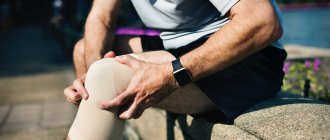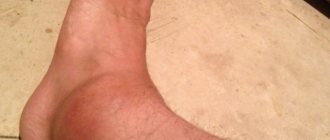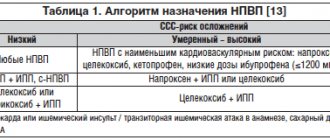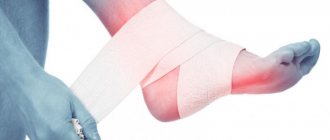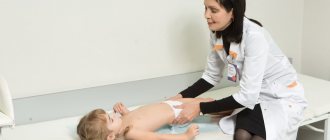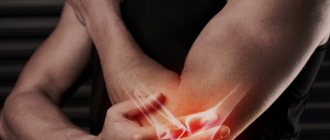Joint pain is the most common type of chronic pain. At least half of city residents over 18 years of age suffer from pain syndrome associated with pathologies of the musculoskeletal system. Therefore, primary prevention of joints must be carried out from a very early age. And if there is discomfort in the joints or has already been diagnosed, pay attention to the secondary prevention of joint pain.
Who should think about joint prevention?
Prevention of joint arthrosis and arthritis is of particular importance for:
- women over 45 and men over 55 who experience age-related hormonal changes;
- persons who are promiscuous (at any age);
- those whose relatives have similar diseases (hereditary factor);
- allergy sufferers;
- people who have suffered serious injuries or surgical interventions in the joints;
- overweight persons;
- patients with congenital and acquired anomalies of the musculoskeletal system (for example, poor posture, flat feet);
- workers whose professional activities involve increased stress on the joints (office workers, loaders, dancers, athletes, drivers and others).
Women get sick, on average, 2 times more often than men. Prevention of arthritis and arthrosis of the knee, wrist and interphalangeal joints is especially important for them.
At risk for polyarthritis and polyarthrosis (i.e., diseases affecting more than 4 joints) are people who:
- suffered severe infections, poisoning, frostbite and burns;
- suffer from intense allergic reactions or chronic stress;
- have endocrine and metabolic disorders (diabetes mellitus, gout);
- have a hereditary predisposition (for example, to rheumatoid arthritis and genetic problems with collagen synthesis).
Also, people with diseases of the cardiovascular and nervous systems, respiratory tract, chronic infectious diseases (for example, tonsillitis), and kidneys need prevention of arthritis and arthrosis of the joints.
General prevention of arthritis and arthrosis
Primary (before the first symptoms appear) prevention of joint diseases involves following simple rules:
- Balance your diet. It should contain not only vitamins and minerals, but also essential amino acids and antioxidants. Some diseases that lead to joint damage are not without reason called “nutritional diseases” (for example, gout). The right diet to prevent joint pain will help delay the onset of symptoms, even if you have a genetic predisposition! Even if the nutrition of the cartilage is already impaired, the degenerative process in the joint can be restrained with the help of healthy food. Eat more cartilage, jelly, jellied meat. Consume vegetables and dairy products daily. Reduce the amount of sweet fruits, starches and processed foods.
- Watch your body weight. The human musculoskeletal system is built on the principle of redistributing the load between small and large joints, so excess weight especially affects the condition of the main joints. For example, the knee joint “feels” every extra kilogram as 5. Losing weight is important for the prevention of joints and in cases where the disease has already been diagnosed - it increases the time of remission, and most importantly, helps relieve pain.
- Maintain water-salt balance. Due to dehydration, the cardiovascular system cannot properly transport nutrients. Nutrients (vitamins, minerals and other substances) are delivered worse to the “peripheral” tissues - and cartilage is the first to suffer. After all, they are devoid of capillaries and are nourished only by synovial fluid. The less it is, the less elastic the cartilage is, and the more vulnerable it is - and therefore complete prevention of arthritis and arthrosis of the joints requires drinking at least 2 liters of water per day.
- Give up bad habits. They force organs (especially the liver, kidneys and heart) to work “for wear and tear”. Coffee, alcohol, cigarettes and drugs dehydrate the body, disrupt metabolism, make bones brittle and reduce immunity. Because of this, cartilage dries out and cracks, and age-related joint problems begin much earlier.
- Lead an active lifestyle. To prevent joints, you don’t need grueling workouts—daily exercise and periodic warm-ups are enough. They improve tissue nutrition and blood circulation, and also keep muscles toned, which are additional insurance for joints, which significantly reduces the shock-absorbing load on synovial cartilage.
- Don't spread diseases. Caries, flu, “acute” adenoids - all this needs to be treated as soon as possible. Many infectious diseases tend to become chronic. And then the body will have to constantly fight the disease. If the patient is injured, there is a risk that the infection will enter the joint and provoke a purulent process. Therefore, in the presence of chronic infections, it is important to visit a traumatologist after any injury to prevent joint arthritis.
- Follow the recommendations of orthopedists. Try to arrange your workplace comfortably. Avoid overload and learn to take the correct posture during professional and domestic activities, so that the load is distributed throughout the musculoskeletal system. If you have orthopedic diseases, perform therapeutic exercises to prevent joint diseases, use special insoles and devices. Women are not recommended to wear high-heeled shoes for long periods of time.
Types of Arthritis
Arthritis comes in several types, depending on the factors that trigger it. Treatment methods for each of them differ significantly, so it is important to correctly determine the form of the disease before starting therapy.
There are two large groups of arthritis: inflammatory (rheumatoid, infectious, reactive, gouty arthritis) and degenerative.
To treat degenerative and infectious types of arthritis, only local treatment is used; for rheumatoid and reactive arthritis, a course of broad-spectrum antibiotics is prescribed, and for gouty arthritis, treatment of the urinary system and associated diseases is prescribed.
Secondary prevention of joint diseases
Secondary prevention of joint arthrosis and other rheumatic diseases is aimed at containing the progression of the disease, preventing complications and irreversible changes in the joint. Some joint diseases (for example, reactive arthritis) can be cured in the early stages. If time is lost, they become chronic.
Recommendations for the prevention of joint diseases are drawn up by the attending physician, taking into account the stage of the lesions, the number of joints involved, the individual characteristics and capabilities of the patient. They often include:
- special therapeutic exercises for the prevention of joint pain (daily);
- massage (in particular, using warming ointments and balms);
- orthopedic prevention of arthritis and arthrosis (use of canes, orthopedic insoles, corsets, orthoses and bandages);
- drug therapy (courses, if necessary), as well as taking chondroprotectors;
- spa treatment - if necessary;
- regular preventive examinations;
- standard preventive measures (healthy diet, weight control, protection from hypothermia, etc.).
These methods of preventing joint diseases help maintain joint mobility, prevent increased pain and the development of the inflammatory process.
The most important thing about arthritis
With arthritis, things are even more complicated and serious. Medicine knows dozens of types of arthritis with different manifestations and causes (rheumatoid, gouty, reactive, etc.). This disease is most often triggered by an infection, a malfunction of the immune system, or a metabolic disorder. It is quite easy to distinguish arthritis from arthrosis - its main symptom is the inflammatory process in the area of the affected joint. It can be recognized by redness of the skin, increased temperature in this area, and the appearance of swelling.
Another important difference between arthritis and arthrosis is that the disease can spread to other organs and systems. The heart, liver, and kidneys are at risk. And yet, unlike arthrosis, arthritis usually develops at a young age - up to 45 years.
Arthritis symptoms
The disease can be hidden until symptoms are triggered by factors such as stress, infection, hypothermia or overwork.
The first signs of arthritis:
- sharp pain with movement and rest;
- constant or periodically occurring swelling in the area of the affected joint;
- increased temperature in the affected area recognizable by touch;
- redness of the skin over the joint;
- stiffness of movement in the morning.
These symptoms may be aggravated by manifestations of the inflammatory process:
- elevated body temperature (38-39 degrees);
- changes in blood parameters;
- loss of strength;
- pain when urinating;
- chills;
- conjunctivitis.
The severity and progression of disease manifestations vary. But if the problem is ignored, arthritis sooner or later develops into a chronic form, causing disturbances in the functioning of internal organs, modification and limitation of joint mobility. According to World Health Organization statistics, arthritis accounts for 18% of disabilities.
Correct load mode
The main enemy of joints is prolonged static loads, which cause stagnant processes in the body. Even a comfortable position, if not changed for hours, leads to the fact that the load-bearing joints are overloaded and do not receive sufficient nutrition.
When preventing arthrosis of the joints, it is important to take into account that nutrition of cartilage is possible only by alternating load and rest. Having a porous structure, it releases synovial fluid when compressed and absorbs it back in a calm state. Synovial fluid in this case plays not only the role of a lubricant, but also a nutrient solution. If cartilage is loaded for a long time, it does not receive the elements it needs. But too long a period of rest for the prevention of arthrosis is fraught - the synovial “solution” is depleted, because all this time the useful substances from it pass into the cartilage tissue. Both extremes lead to the fact that the joint “starves”, becomes fragile and inelastic, and chondrocytes (cartilage cells) begin to die. Prevention of joint diseases consists of proper alternation of rest and physical activity. This means that when working sedentarily or doing monotonous physical work, it is important to take breaks for 5-10 minutes every hour to stretch your joints and muscles.
Here are some more tips to help you prevent joint pain:
- when standing, use a low bench, periodically placing one leg or the other on it to rest;
- Make sure that when carrying heavy objects your back is straight;
- when lifting a heavy object, squat down with a straight back, and then rise using the leg muscles - this way you won’t break your back every time;
- to prevent arthrosis, use a comfortable chair with armrests for work or rest - it is advisable to choose one that can be adjusted to your height;
- read the tips for maintaining posture in schoolchildren - they will help relieve joints at any age;
- prefer hard seats to soft ones - this will make it easier for you to monitor fatigue and take a timely break to warm up to prevent arthritis of the joints;
- When driving or at your desk, stay straight and do not lean forward;
- install ergonomic headrests and lumbar bolsters in the car to reduce the shock-absorbing load on the joints due to vibration of the vehicle;
- give up running and highly traumatic sports.
To prevent arthritis and arthrosis, do swimming, walking, therapeutic exercises, do not neglect cycling - and may your joints never get sore!
